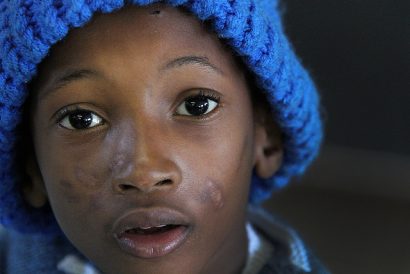Tag: Conflict and Security
This article is based on observations of the educational facilities provided for asylum seeking children detained on Christmas Island. These observations are situated within international and domestic legal and policy frameworks addressing the educational rights of asylum seeking children. The article argues that challenges such as the effects of institutionalisation on children and their parents, and the absence… Read more
By 2020, refugee youth (refugees aged 14-29) will number over 1.5 million. This represents an overall 6 per cent rise since 2010: 4 per cent in Jordan, 8 per cent in the West Bank and 15 per cent in Gaza. UNRWA’s ten youth commitments are in the areas of education, health, vocational training, microfinance, scholarships, skills development, rights, partnerships,… Read more
This publication asks, what happens when a humanitarian crisis with political roots interacts with a humanitarian crisis induced by environmental disaster? Focusing on Sri Lanka and Indonesia, countries that were dealing with complex upheavals long before the 2004 tsunami struck, this publication shows how the storm shifted the goals of international aid, altered relations among and… Read more
This research identified three key components which can help build resilience to extremism amongst young people and identified support factors that underpin them. These are 1) Making a connection through effective design and a youth-centred approach; 2) Facilitating a safe space for dialogue and positive interaction; and 3) Equipping young people with appropriate capabilities –… Read more
The purpose of this evaluation was to identify and assess progress of UNICEF’s Education in Emergencies and Post-Crisis Transition (EEPCT) Programme in Sri Lanka and to enable systematic reflection towards improving programme results. Because of the war, which grew progressively worse over almost 30 years, and the devastation caused by the 2004 tsunami, the country… Read more
Since the last Human Development Report was published in 2010, several key events and developments have impacted empowerment in Palestine. While some have had a positive impact, on the whole there has been a marked deterioration in the state of Palestinian empowerment over the past four years. The international recognition of Palestinian readiness for statehood… Read more
Modern day conflict presents a unique challenge to the disaster response and humanitarian community. Different to many disasters, conflict manifests itself over a protracted period, with varying levels of severity and no clear beginning or end. Increasingly children are the victims of such conflict, with their basic rights threatened. Education systems are increasingly vulnerable to… Read more
Randomised trials have experienced a marked surge in endorsement and popularity in education research in the past decade. This surge reignited paradigm debates and spurred qualitative critics to accuse these experimental designs of eclipsing qualitative research. This article reviews a current iteration of this debate and examines two randomised trials that incorporate mixed methods to… Read more
Education is a significant contributor to peace, and appears in two of the 24 indicators in the Positive Peace Index produced by the Institute for Economics and Peace. Education can lead to peace and be a part of ‘building back better’ by supporting the transformation of the security situation, political institutions, economic regeneration and social… Read more
In recognition of the challenges of working effectively in conflict-affected and fragile situations, including insecurity, weak state capacity, difficult political environments and acute humanitarian crises, the OECD-DAC developed a series of Principles for Good International Engagement in Fragile States and Situations in April 2007 to complement the commitments set out in the Paris Declaration on Aid Effectiveness. DFID has… Read more
The spread of Ebola in West Africa centres on a region with a shared recent history of transnational civil war and internationally led post-conflict reconstruction efforts. This legacy of conflict and shortcomings in the reconstruction efforts are key to understanding how the virus has spread. The dynamics of warfare tied into and accentuated the state’s… Read more





